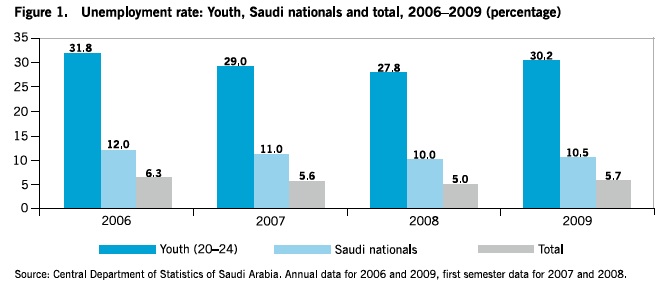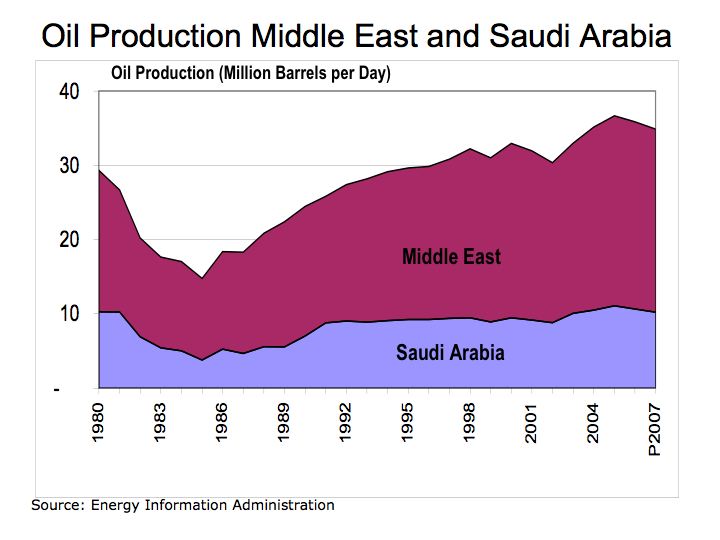Commentary
The youthful population in Saudi Arabia is still being faced with a growing rate of unemployment. This may appear as a paradox bearing in mind that this country is one of the leading producers of crude oil. There are several fundamental and systematic limitations that have significantly contributed to unemployment in Saudi Arabia. Unless the Kingdom addresses these shortcomings, the rate of unemployment will continue to rise over the coming years.
One of the core causes of unemployment is the religious conservative nature of the Arabian Society. The latter has made it quite difficult for the Saudi Arabian government to fully incorporate female employees into the workforce. In other words, there are quite a number of jobs that cannot be done by the female gender.
As a matter of fact, there are more unemployed females than males. Education has also been cited as a major reason why the young population in Saudi Arabia can hardly secure employment. Proper education standards are not in place. This has resulted into a massive influx of expatriates in Saudi Arabia to supplement the dwindling workforce. There is urgent need to improve the current standard of education in order to boost the employability of the youthful generation.
Reliance on foreign workers by the private sector has even worsened the current state of unemployment in Saudi Arabia. The local young population cannot secure the high-end jobs that are being taken by the professional workers from other countries. From the figure below, the Saudi Arabian youths who range between the ages of 20 to 24 years face the worst brunt of unemployment compared to the other Saudi nationals.

As it stands now, there are close to100, 000 new graduates in Saudi Arabia who seek employment each year. The young people who are below the age of 30 yeas comprise of about 60% of the total population (Hoetjes par. 3). Tough employment measures should be put in place because these are alarming figures.
For example, the Saudi government should decease from relying on the private sector. The higher education should also be structured in such a way that it can offer vocational training to the young population. In addition, the cultural restrictions should be eased down so that women can also access gainful employment in both the private and public sectors. If such measures are not put in place, the economic stability of Saudi Arabia may be weakened.
Needles to say, the Saudi economy has greatly benefited from the increased production of oil as well as the high oil prices. Oil production in Saudi Arabia has always been on the increase. In any case, Saudi Arabia still produces a large amount of crude oil compared to the individual Middle East countries as shown in the chart below.

It is surprising that the oil bloom has not benefitted the Saudi nationals as expected. The employed foreign workers are the main beneficiaries of the oil industry. Worse still, the jobs created by the oil industry are mainly tailored to match the foreign workers with specialized skills. The non-Saudis immensely benefitted from 1.5 million employment opportunities that were created since 2010 while the Saudis were allocated the remaining 500,000 jobs (Hoetjes par.4).
Perhaps, it may not be appropriate to blame the private sector on this issue. Whereas unemployment in Saudi Arabia has been contributed by quite a number of factors, the individual Saudi nationals should also be held responsible for the mess. For example, it is not possible for the oil and gas industries in Saudi Arabia to hire people who are not well trained for specialized jobs.
It is common knowledge that experts are required to run the industry except for a few non-skilled jobs. As much as an individual may be a Saudi national, it does not guarantee full employment in the oil industry. Background skills, knowledge and working competencies are prerequisites that cannot be ignored at all.
The private sector in Saudi Arabia has heavily employed foreign workers. In other words, a small number of Saudi nationals have been absorbed by this sector. The Ministry of Labor released a labor report in 2011 which revealed that close to 90% of the workforce in the private sector were foreigners.
Such a trend is expected because the private sector is mostly run on the basis of optimizing profits. The input of workers is directly proportional to the net production. The jobs offered by the private sector are highly competitive. The local Saudi population faces intense competition from the expatriates.
Works Cited
Hoetjes, Gertjan. Unemployment in Saudi Arabia: a Ticking Time Bomb? 2013. Web.